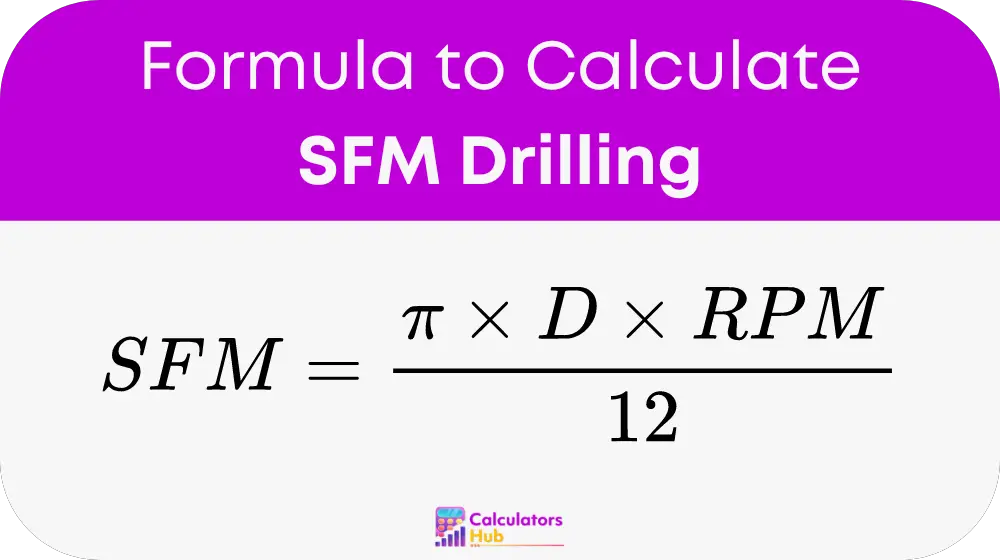The SFM (Surface Feet per Minute) Calculator Drilling helps determine the cutting speed in machining operations, especially drilling. This calculator ensures optimal speed and efficiency during drilling by calculating the surface speed of the drill bit. The SFM is important for determining the quality of the drill hole and the lifespan of the drill bit. By using the SFM Calculator, users can achieve precise and efficient drilling operations, reducing tool wear and improving productivity.
Formula of SFM Calculator Drilling
The formula for calculating SFM is:

Where:
- SFM = Surface Feet per Minute
- D = Diameter of the drill bit (in inches)
- RPM = Revolutions Per Minute of the spindle
General Terms and Conversion Table
To assist users, here is a table of common drill bit diameters and their corresponding SFM values at different RPMs. This can be helpful for quick reference without needing to calculate each time.
| Drill Bit Diameter (inches) | RPM | SFM |
|---|---|---|
| 0.25 | 1000 | 65.45 |
| 0.5 | 1000 | 130.9 |
| 0.75 | 1000 | 196.35 |
| 1 | 1000 | 261.8 |
| 0.25 | 2000 | 130.9 |
| 0.5 | 2000 | 261.8 |
| 0.75 | 2000 | 392.7 |
| 1 | 2000 | 523.6 |
Example of SFM Calculator Drilling
Let's consider an example to understand how the SFM Calculator Drilling works.
Suppose you have a drill bit with a diameter of 0.5 inches and your spindle is rotating at 1500 RPM. Using the formula:
SFM = (π * 0.5 * 1500) / 12
SFM = (3.1416 * 0.5 * 1500) / 12 = 196.35
So, the Surface Feet per Minute for this drill bit and RPM is 196.35.
Most Common FAQs
SFM is important because it affects the quality of the drilled hole and the lifespan of the drill bit. Proper SFM ensures efficient cutting and reduces tool wear, leading to better results and cost savings.
To choose the correct RPM, you need to know the diameter of your drill bit and the desired SFM. Using the SFM formula, you can calculate the RPM that matches your requirements. Alternatively, you can refer to the provided table for quick reference.
If the SFM is too high, it can cause excessive heat, leading to rapid tool wear and possible damage to the drill bit. If the SFM is too low, it can result in poor cutting performance, increased cycle times, and suboptimal hole quality.